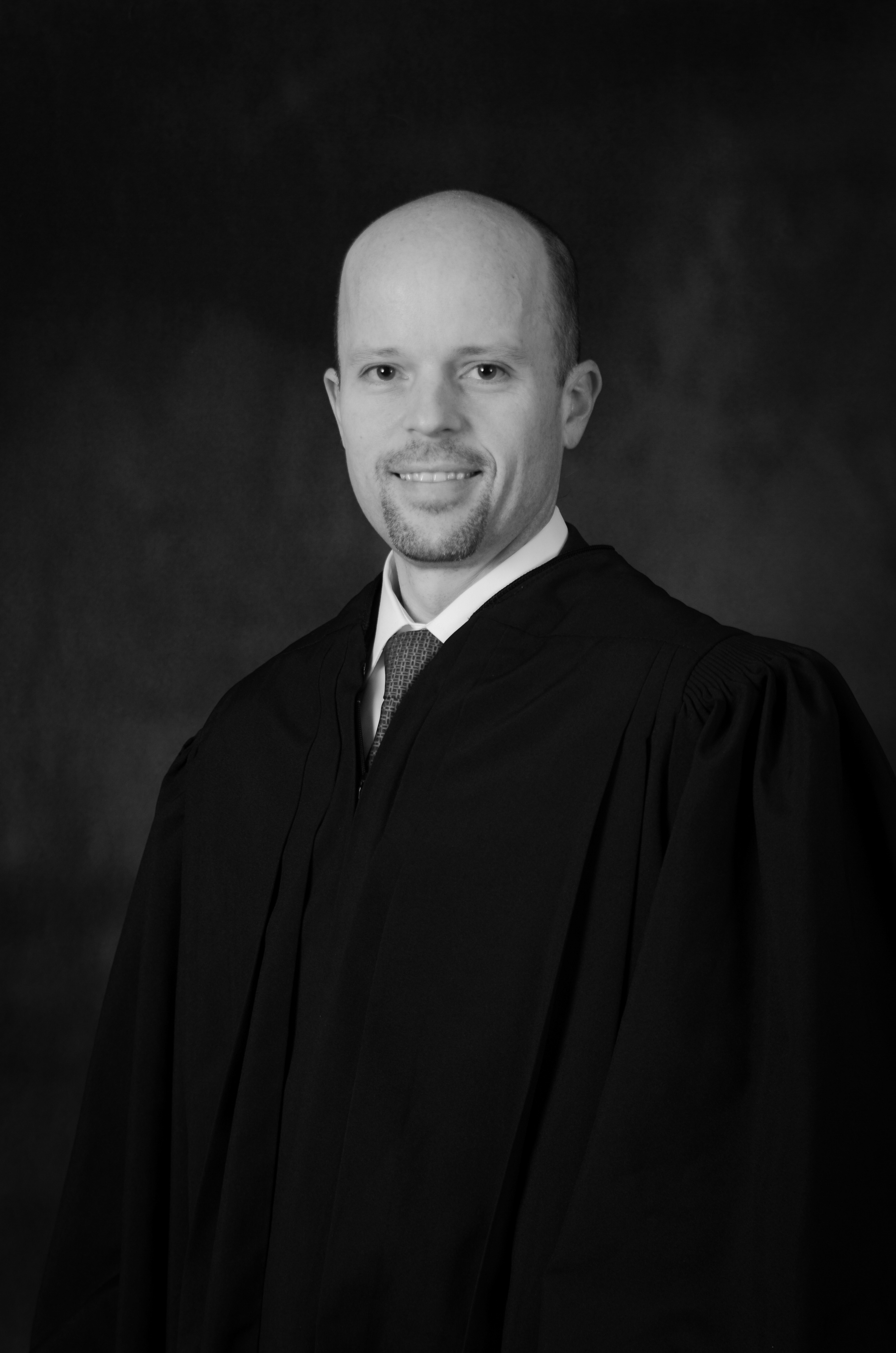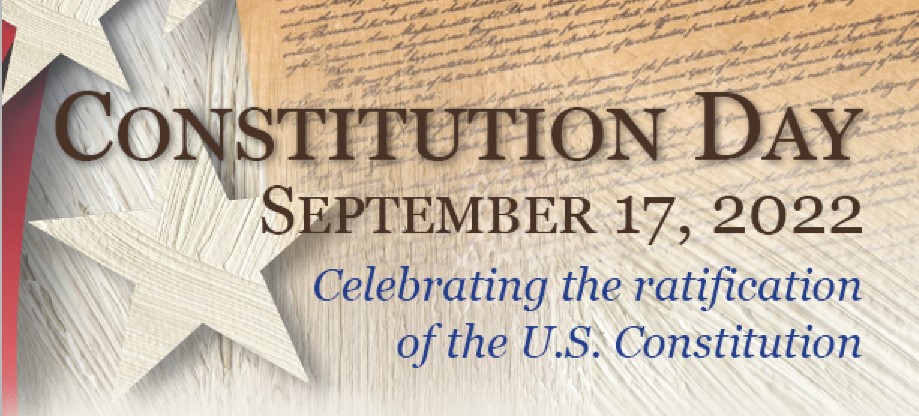Talk by North Dakota Supreme Court Justice Jerod E. Tufte
Friday, September 16th from 11a-12:00p in the Anishinaabe Theater at the Memorial Union.
The event is being co-sponsored by NDSU Civic Engagement and the Challey Institute for Global Innovation and Growth. A free boxed lunch (and cake!) will be available immediately following the event to the first 80 attendees.
-
About Justice Jerod E. Tufte
- Justice Tufte was born in Minot, North Dakota, in 1975. He is married to Mylynn Tufte and has three children.

Professional experience:
Private practice in Phoenix, Arizona, and Steele, North Dakota. Appointed Kidder County State’s Attorney in 2005 and elected in 2006 and 2010.- Judge Advocate, North Dakota Army National Guard, 2008-2016, including overseas service in Kosovo.
- Legal counsel to Governor Jack Dalrymple 2011-2014.
- Appointed District Court Judge in 2014.
- Elected to Supreme Court in 2016.
Membership and Committees:
Chair of Court Technology Committee, Committee on Tribal and State Court Affairs, Judicial Conference Standing Committee on Legislation. Member of Joint Committee on Attorney Standards, Judicial Nominating Committee, Personnel Policy Board. Past member of Judicial Ethics Advisory Committee.
-
Supreme Courts
-
Article III of the Constitution deals with Judicial powers.
U.S. Supreme Court North Dakota Supreme Court You can read Opinions of the Court, read or listen to oral arguments. You can watch Court Recordings or read opinions - About Constitution Day & Citizenship Day
-
The celebration of citizenship day started in 1940 with “I Am An American Day.” It was celebrated on the third Sunday in May.
In 1952 the day was moved to September 17th, the day the U.S. Constitution was signed in 1787.
In 2004 a law was passed combining Citizenship Day and Constitution Day. This law included Universities:
“Each educational institution that receives Federal funds for a fiscal year shall hold an educational program on the United States Constitution on September 17 of such year for the students served by the educational institution.”
- The Constitution
-
The current Constitution with amendments, provided by Cornell Law School.
The Bill of Rights contains the first 10 amendments to the Constitution.
History of the Constitution
Continental Congress and the Constitutional Convention Broadsides Collection
This collection from the Library of Congress “contains 277 documents relating to the work of Congress and the drafting and ratification of the Constitution. Items include extracts of the journals of Congress, resolutions, proclamations, committee reports, treaties, and early printed versions of the United States Constitution and the Declaration of Independence.”Constitution of the United States of America: Analysis and Interpretation
"The U.S. Constitution comprises the primary law of the U.S. Federal Government. It describes the three chief branches of the Federal Government and their jurisdictions, and lays out the basic rights of citizens of the United States. The U.S. Constitution is the oldest Federal constitution in existence and was framed by a convention of delegates from twelve of the thirteen original states in Philadelphia in May 1787, Rhode Island failing to send a delegate. The U.S. Constitution is the landmark legal document of the United States."The Federalist Papers
"The Federalist, commonly referred to as the Federalist Papers, is a series of 85 essays written by Alexander Hamilton, John Jay, and James Madison between October 1787 and May 1788. The essays were published anonymously, under the pen name "Publius," in various New York state newspapers of the time.The Federalist Papers were written and published to urge New Yorkers to ratify the proposed United States Constitution, which was drafted in Philadelphia in the summer of 1787. In lobbying for adoption of the Constitution over the existing Articles of Confederation, the essays explain particular provisions of the Constitution in detail. For this reason, and because Hamilton and Madison were each members of the Constitutional Convention, the Federalist Papers are often used today to help interpret the intentions of those drafting the Constitution."
Congress Creates the Bill of Rights (National Archives)
“Within the half-billion pages of records in the care of the Center for Legislative Archives, there are some special treasures from the First Congress that show how the ratification of the Constitution necessitated the creation of the Bill of Rights (National Archives Founding Documents), and how the creation of the Bill of Rights, in turn, completed the Constitution. The remarkable story of the relationship between two of our Charters of Freedom is told in Congress Creates the Bill of Rights.” - Citizenship
-
Citizenship Day is for public recognition of all who had attained the status of American citizenship. The process to become a citizen is complicated, and requires at least 3-5 years of permanent residence (green card) depending on the situation.
Citizenship Resource Center
Basic information on how to apply for citizenship.“According to the 14th Amendment to the Constitution, which was ratified on July 9, 1868, ‘all persons born or naturalized in the United States, and subject to the jurisdiction thereof, are citizens of the United States and the State wherein they reside.’ This has been subject to interpretation and change since the 14th Amendment was enacted. For example, Native Americans were not officially considered United States citizens until the Indian Citizenship Act was passed in 1924.” (Bell, The Constitution and Citizenship Day.
Calvin Coolidge: Radio Address from the White House on the Duties of Citizenship, November 3rd, 1924,
“But the right to vote is conferred upon our citizens not only that they may exercise it for their own benefit, but in order that they may exercise it also for the benefit of others. Persons who have the right to vote are trustees for the benefit of their country and their countrymen. They have no right to say they do not care. They must care! They have no right to say that whatever the result of the election they can get along. They must remember that their country and their countrymen cannot get along, cannot remain sound, cannot preserve its institutions, cannot protect its citizens, cannot maintain its place in the world, unless those who have the right to vote do sustain and do guide the course of public affairs by the thoughtful exercise of that right on election day”- Coolidge
Profiles on Naturalized Citizens: Fiscal Year 2018
Statistics on people who have become Naturalized Citizens.The Citizen’s Almanac is a collection of America’s most cherished symbols of freedom and liberty, serving as a modern-day lifeline to the rich civic history we all share as Americans. The booklet includes information on patriotic anthems and symbols, citizenship rights and responsibilities, the creation of our founding documents, biographical details on prominent foreign-born Americans, landmark decisions of the U.S. Supreme Court, and important presidential and historic speeches on citizenship.
Can you pass the test? When someone applies for Citizenship, at some point they will take the Naturalization test. You can take the practice test here.
- Videos and Media
- More videos and classes can be found on the National Constitution Center YouTube page.More videos and classes can be found on the National Constitution Center YouTube page.


